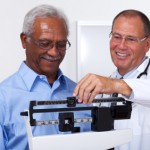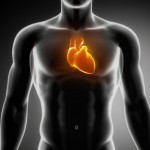About two months ago I visited a friend in the hospital. He's a little over 80 years old, has several significant chronic medical problems and had recently undergone surgery. When I arrived in his room, he was in bed, didn't recognize me and then sat up and started rowing. Obviously he was delirious and hallucinating.
I've seen him at home since and he's back to baseline, but the topic of post-surgery delirium surfaced in the July 4, 2012 issue of JAMA, so I started reading on the subject.
I found an article in a 2004 issue of the American Journal of Psychiatry (AJP) that was a good start, but was clearly aimed at medical folk, especially those who would be prescribing medication for the mostly severely affected patients with delirium. The AJP piece said the first step is determining the cause...if possible. It mentioned that the word itself comes from the Latin word delirare, loosely translated as "to be out of one's furrow." My online dictionary defines delirium as an acute (as opposed to chronic) disturbed state of mind that occurs in fever, intoxication, and other disorders and is characterized by restlessness, illusions, and incoherence of thought and speech.
The most recent mental health Diagnostic and Statistical Manual of Mental Disorders, DSM-IV-TR, a much-used but somewhat controversial tome (I'll write about the DSM in a later post), says delirium is a syndrome (a collection of symptoms and physical signs) of many different causes and that its major features are confusion and loss of short-term memory. It mentions one classic sign, not seen in all cases by any means, is carpologia, a term I'd never heard before, but a behavior I've seen many times; it means picking at the bed sheets in a purposeless, repetitive fashion. The patient may be agitated, have delusions and hallucinations, and may try to remove their IV lines or climb out of bed.
On the other hand, some people have a lethargic, hypoactive form of the syndrome; those may be even tougher to diagnose.
A Mayo Clinic website mentions one hallmark of delirium is a sudden or relatively sudden onset with symptoms that tend to wax and wane. Input from family members as to the patient's pre-illness/surgery mental status may be very helpful in sorting out those who had pre-existing dementia from those who didn't, as the two conditions not infrequently co-exist.
It's not just surgical patients, of course; when I was in practice the term internists used was "ICU-itis, and medical patients, especially the elderly who were in Intensive Care for a prolonged period, were the ones we had to deal with most commonly. So a better term might be hospital-induced delirium. But some delirious patients have ingested substances causing the condition (PCP would be one example and alcohol withdrawal another), have heavy metal poisoning, medication-caused delirium, infections involving the central nervous system or metabolic disorders.
It's common, but much more so in older patients and a 2010 meta-analysis of forty-two high-quality studies concluded that delirium in this group is associated with poor outcomes, regardless of age, gender, preceding dementia, and other illnesses.
I'll come back to this frequent and often ominous issue in my next post. As our population ages, we'll likely see more of this condition. Planning in advance for hospital stays may help prevent some episodes of delirium.







